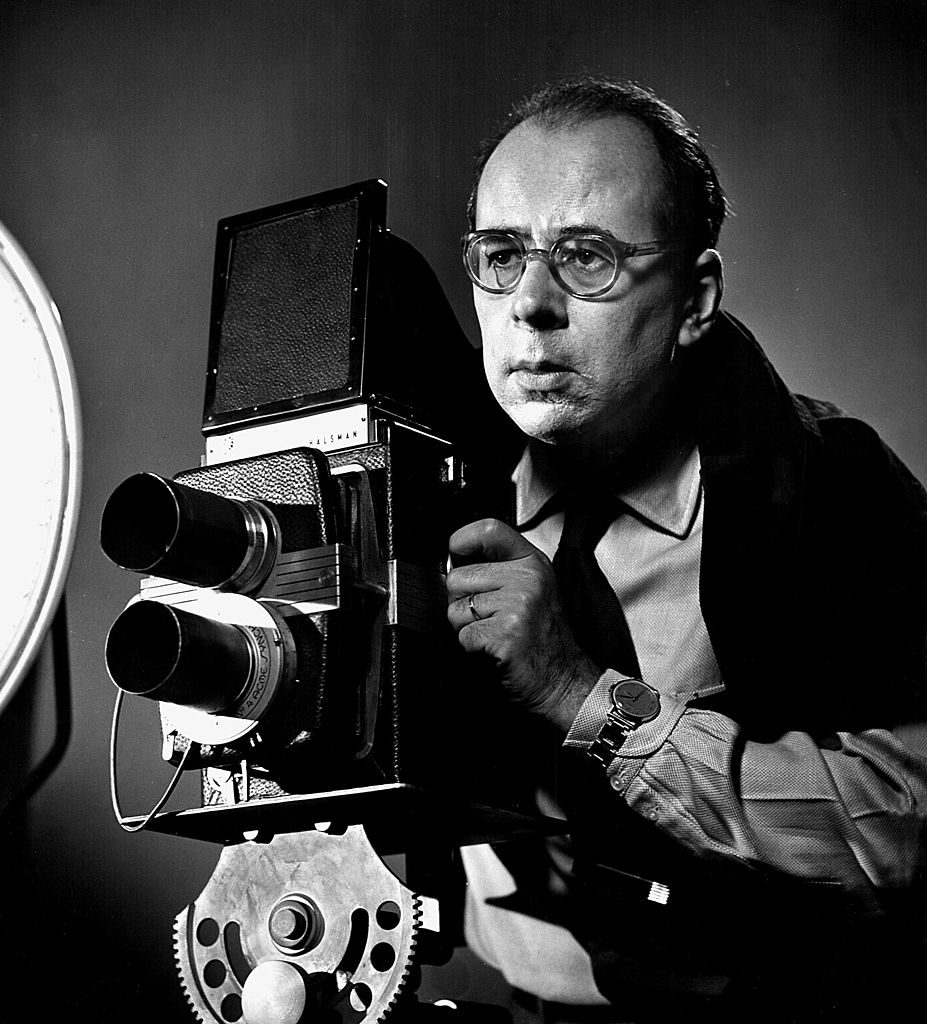
Andreas Feininger looking at negatives with a magnifying glass. (Photo by Andreas Feininger/The LIFE Picture Collection © Meredith Corporation)
LIFE’S photographers were known for their images of people, but Andreas Feininger (1906-1999) was a profound exception. His concerns were basically with things, perhaps a continuum from his early career as an architect (he worked for a year with Le Corbusier). “Realism and super-realism are what I am after. This world is full of things the eye doesn’t see. The camera can see more, and often 10 times better.” Yet it wasn’t “photography” he was after, but a photograph: “I want to get shots of the things I’m interested in. I use it as a means to an end.” He combined masterly technique with a discerning eye to produce work that is harmonious and incisive.

S.S. United States sailing in New York harbor. (Photo by Andreas Feininger/The LIFE Picture Collection © Meredith Corporation)
Feininger took this picture “because I felt putting these two achievements together gives you a fantastic look at the achievements of man. Man has built this enormous city and this enormous ship.. . there are tiny people lining the bridge of the ship. They are clear but very small. To think that people no bigger than these have constructed and built that enormous ship. That is almost unbelievable.”

Forest of wells, rigs and derricks crowd the Signal Hill oil fields. (Photo by Andreas Feininger/The LIFE Picture Collection © Meredith Corporation)
As John Loengard notes in LIFE Photographers: What They Saw, these oil derricks are ugly but also somehow grand and dramatic. Feininger responded that he “did that deliberately because that way, people remember what oil stands for, what this pursuit of oil does to the environment. I had to go pretty far back to find the perspective that puts all these derricks close together. That is how I got this feeling of their importance and their dynamic and their horror. They have totally ruined the whole landscape as far as you can see…It is dead, totally dead.”
—Adapted from The Great LIFE Photographers

Light pattern produced by a time exposure of the light tipped rotor blades of a grounded helicopter. (Photo by Andreas Feininger/The LIFE Picture Collection © Meredith Corporation)

Photographer Dennis Stock holding camera to his face so that the lens looks like his right eye and the viewfinder his left eye. (Photo by Andreas Feininger/The LIFE Picture Collection © Meredith Corporation)

Dramatic cumulus clouds billowing over a Texaco gas station along a stretch of highway US 66, aka Route 6. (Photo by Andreas Feininger/The LIFE Picture Collection © Meredith Corporation)














